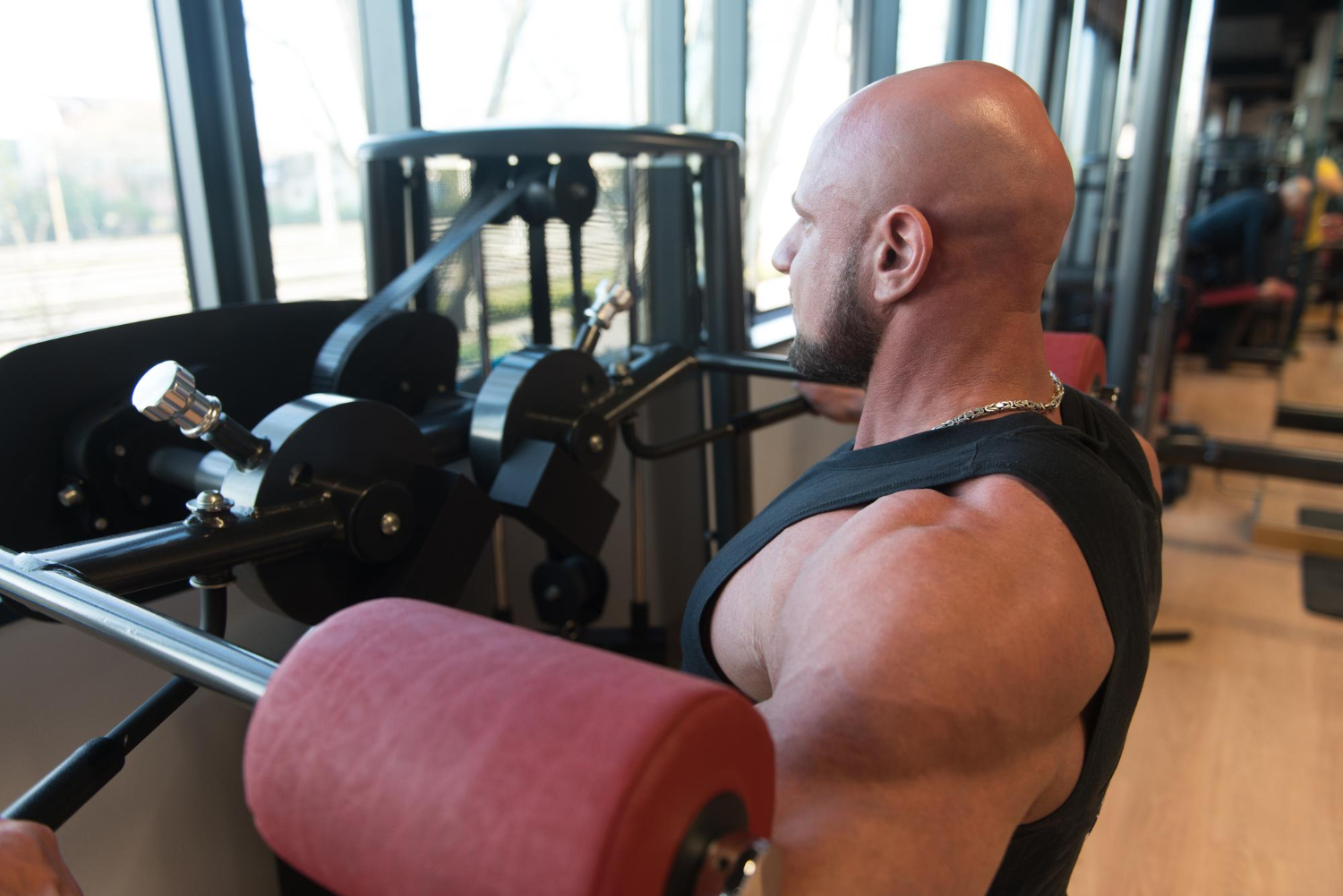When it comes to maximising muscle growth, understanding the optimal number of sets both per workout and over the course of a week is crucial. This balance helps ensure you are providing adequate stimulus for muscle hypertrophy while allowing for proper recovery. This guide will break down how many sets you should perform per muscle both in a single workout and over a week, supported by scientific research and practical recommendations.
Understanding Sets and Training Volume
Sets are a fundamental component of resistance training. They represent the number of cycles of repetitions (reps) performed for each exercise. Training volume, which is the product of sets, reps, and weight lifted, is a critical factor influencing muscle growth. Higher training volumes generally promote greater hypertrophy, but only if balanced with proper recovery and intensity.
Optimal Number of Sets Per Muscle Group
The number of sets you should perform per muscle group in a single workout and over a week depends on several factors, including your training experience, goals, and the specific muscle group targeted. Here’s a detailed look at how to balance sets per workout and per week for each muscle group.
1. Chest
Per Workout
- Beginners: 3–4 sets per exercise
- Intermediate to Advanced: 4–5 sets per exercise
Example Workouts:
- Beginners: 3 sets of bench press, 3 sets of incline dumbbell press, 3 sets of chest flyes (total: 9 sets)
- Intermediate to Advanced: 4 sets of bench press, 4 sets of incline press, 4 sets of cable crossovers, 4 sets of dips (total: 16 sets)
Per Week
- Beginners: 12–15 sets
- Intermediate to Advanced: 15–20 sets
Weekly Example:
- Beginners: Two workouts per week, 3 sets per exercise (e.g., bench press, incline press, chest flyes)
- Intermediate to Advanced: Three workouts per week, varying exercises and volumes to achieve 15–20 sets
2. Back
Per Workout
- Beginners: 3–4 sets per exercise
- Intermediate to Advanced: 4–5 sets per exercise
Example Workouts:
- Beginners: 3 sets of deadlifts, 3 sets of pull-ups, 3 sets of barbell rows, 3 sets of lat pulldowns (total: 12 sets)
- Intermediate to Advanced: 4 sets of deadlifts, 4 sets of pull-ups, 4 sets of T-bar rows, 4 sets of seated rows, 4 sets of face pulls (total: 20 sets)
Per Week
- Beginners: 15–18 sets
- Intermediate to Advanced: 18–25 sets
Weekly Example:
- Beginners: Two workouts per week, including a mix of exercises to total 15 sets
- Intermediate to Advanced: Three workouts per week, varying exercises and increasing sets to reach 18–25
3. Legs
Per Workout
- Beginners: 3–4 sets per exercise
- Intermediate to Advanced: 4–6 sets per exercise
Example Workouts:
- Beginners: 3 sets of squats, 3 sets of leg presses, 3 sets of leg curls, 3 sets of calf raises (total: 12 sets)
- Intermediate to Advanced: 5 sets of squats, 5 sets of deadlifts, 5 sets of leg presses, 4 sets of leg extensions, 4 sets of leg curls, 4 sets of calf raises (total: 27 sets)
Per Week
- Beginners: 15–18 sets
- Intermediate to Advanced: 18–25+ sets
Weekly Example:
- Beginners: Two workouts per week, each with a balanced mix of exercises to reach 15 sets
- Intermediate to Advanced: Three workouts per week, increasing volume to achieve 18–25+ sets
4. Shoulders
Per Workout
- Beginners: 3 sets per exercise
- Intermediate to Advanced: 4 sets per exercise
Example Workouts:
- Beginners: 3 sets of overhead press, 3 sets of lateral raises, 3 sets of rear delt flyes (total: 9 sets)
- Intermediate to Advanced: 4 sets of overhead press, 4 sets of lateral raises, 4 sets of rear delt flyes, 4 sets of front raises (total: 16 sets)
Per Week
- Beginners: 10–12 sets
- Intermediate to Advanced: 15–20 sets
Weekly Example:
- Beginners: Two workouts per week, with a focus on different exercises to achieve 10–12 sets
- Intermediate to Advanced: Two to three workouts per week, varying exercises to reach 15–20 sets
5. Arms (Biceps and Triceps)
Per Workout
- Beginners: 2–3 sets per exercise
- Intermediate to Advanced: 3–4 sets per exercise
Example Workouts:
- Beginners: 3 sets of barbell curls, 3 sets of hammer curls, 3 sets of tricep pushdowns, 3 sets of tricep dips (total: 12 sets)
- Intermediate to Advanced: 4 sets of barbell curls, 4 sets of preacher curls, 4 sets of tricep pushdowns, 4 sets of overhead tricep extensions (total: 16 sets)
Per Week
- Beginners: 10–12 sets per muscle group
- Intermediate to Advanced: 12–20 sets per muscle group
Weekly Example:
- Beginners: Two workouts per week for arms, each including a range of exercises to total 10–12 sets
- Intermediate to Advanced: Two to three workouts per week, increasing volume to achieve 12–20 sets
6. Abs
Per Workout
- Beginners: 2–3 sets per exercise
- Intermediate to Advanced: 3–4 sets per exercise
Example Workouts:
- Beginners: 3 sets of crunches, 3 sets of leg raises, 2 sets of planks (total: 8 sets)
- Intermediate to Advanced: 4 sets of hanging leg raises, 4 sets of weighted crunches, 4 sets of Russian twists (total: 12 sets)
Per Week
- Beginners: 10 sets
- Intermediate to Advanced: 12–15 sets
Weekly Example:
- Beginners: Two workouts per week, focusing on different ab exercises to achieve 10 sets
- Intermediate to Advanced: Three workouts per week, including various exercises to reach 12–15 sets
Factors Influencing the Optimal Number of Sets
1. Training Frequency
Your training frequency for each muscle group will impact how many sets you perform per workout. Training a muscle group more frequently allows you to distribute the weekly volume across multiple workouts.
2. Exercise Selection
Compound exercises typically require fewer sets compared to isolation exercises for the same level of muscle stimulation. Incorporating both types of exercises can help achieve balanced muscle development.
3. Training Intensity and Reps
Higher intensity and lower rep ranges may require more sets to achieve effective hypertrophy. Conversely, lighter weights with higher reps might necessitate fewer sets to achieve the same results.
4. Individual Recovery Capacity
Everyone’s ability to recover varies. Some individuals can handle higher volumes with minimal rest, while others need more time to recover between sessions. Adjust your sets based on your recovery and fatigue levels.
5. Training Goals
Your specific goals, whether hypertrophy, strength, or endurance, will influence the number of sets required. For hypertrophy, moderate to high volume with sufficient intensity is generally recommended.
Balancing Volume with Recovery
Proper recovery is essential to prevent overtraining and promote muscle growth. Here’s how to balance volume with recovery:
1. Rest and Recovery
Allow adequate rest between workouts, especially for larger muscle groups. Ensure you’re getting sufficient sleep and managing stress to aid recovery.
2. Monitor Fatigue
Be mindful of your fatigue levels. If you’re experiencing persistent soreness or fatigue, consider reducing the number of sets or adjusting your training frequency.
3. Progress Gradually
Increase the number of sets gradually to avoid overtraining. Sudden increases in volume can lead to injuries and stagnation.
Determining the optimal number of sets per muscle group both per workout and per week involves understanding your individual needs, goals, and training experience. Beginners generally benefit from fewer sets per workout and per week, while intermediate and advanced lifters require higher volumes to continue making progress.
By tailoring your set volume to your specific muscle groups and balancing it with proper recovery, you can maximise muscle growth and achieve your fitness goals effectively. Adjust your training based on your body’s response and progress to keep advancing in your fitness journey.





